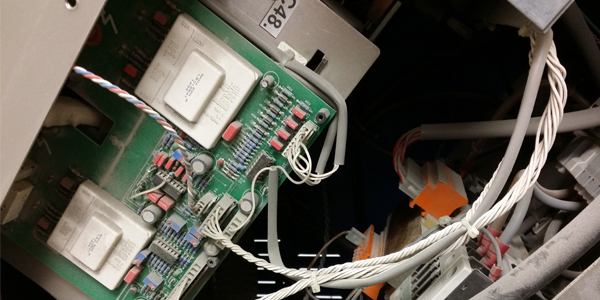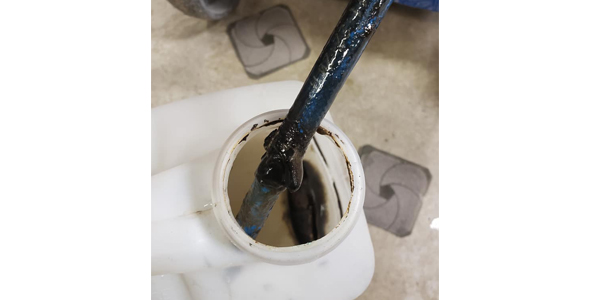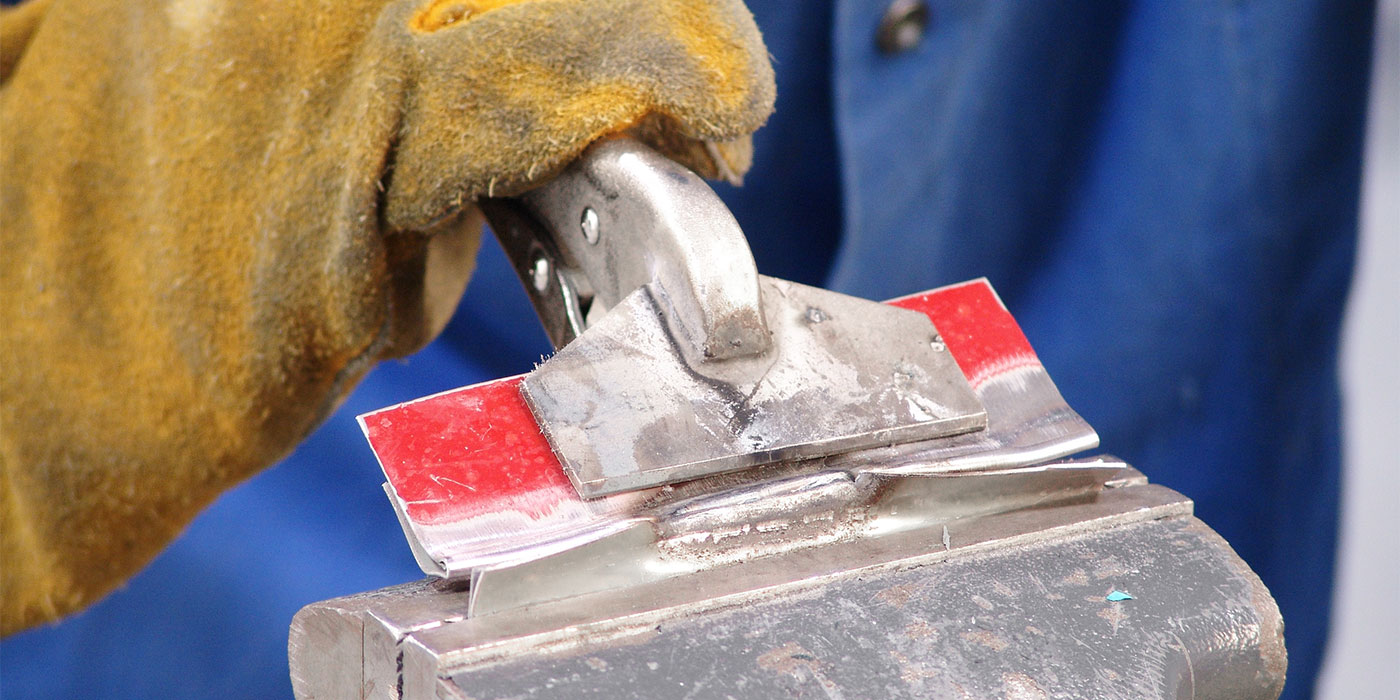
“It’s not my job.” This was the response a technician gave me when I asked him why he never told anyone there was a problem with the squeeze-type resistance spot welding (STRSW) machine he was using.
I hear this statement from technicians time and time again, and it absolutely infuriates me. You would think that with all the training on cycle time and working together that technicians would understand the team concept. When I go to shops to do training, I frequently see equipment so poorly maintained that it takes hours to return it back to operating condition – if it can be done at all. Lots of critical and money-making pieces of equipment sit unused because nobody wants to take the time to fix them. It costs us so much to repair a certain piece of equipment every time it breaks down.
My next question is, how much training has the technician had on this particular piece of equipment? What preventive maintenance does the equipment manufacturer suggest, and how often is it performed in the shop? That usually gets me the “deer in the headlights” look.
Your shop operates on the principle of everything and everybody working together to repair the vehicle back to pre-accident condition. When all is well, you make money to maintain and grow your business. When the wrong parts are ordered or you miss a part, you jump on the issue to resolve the problem. When most anything happens, there is always a “fireman” to put out the fire. However, that same attitude is rarely often applied to maintaining or repairing equipment. And there are many reasons for this. But the fact is when your equipment doesn’t work, production slows down and revenue goes down. Not maintaining equipment costs you money.
Why
Equipment breaks down for many reasons. And it may not be one reason but a combination of reasons. The lack of communication between shop personnel makes the problem worse. Establishing whose job it is to take care of the problem is never addressed.
Here are some basic reasons why equipment fails:
- The equipment purchased was not built for the amount of use or the environment in which it is being used. An example would be using a cheap welder in a high-volume body shop.
- Lack of training on using the equipment – a common problem on STRSW machines, which are expensive to purchase and repair.
- Lack of training to maintain the machine or lack of preventive maintenance.
- Lack of cleaning or protecting the equipment from shop dust and the environment.
- Apathy towards shop equipment.
Look around your shop and note how many technicians have their own equipment such as welders. Ask the technicians why they have their own welder or other equipment, and the answer is usually, “The shop’s usually never works,” or the other technicians abuse the equipment. In some cases, there is not enough equipment to accommodate the shop’s needs. But that’s a whole other article for another day.
Another more common reason why techs use their own personal equipment is lack of communication. Equipment may be in need of repair, but everybody assumes somebody else is going to deal with it.
Culture
What is the culture of your shop? It’s an interesting question. Sometimes we need to step back and listen.
What drives many successful shops is teamwork and unity on a finished product. Not everyone has to like each other, but everyone respecting each other is critical to all shops’ success. It’s possible to not like a coworker and work very well with them. You can agree to disagree, but respect their work and they’ll respect yours. This also applies to the shop. The shop has spent money to buy equipment to help technicians in production. For a technician to use and abuse equipment to the point where it is not functional for other technicians is disrespectful. It takes a culture of maintaining and working together to keep production at its optimum level. This requires everyone working to take care of and maintain equipment. It also takes shop management listening and following through on what needs to be done. It frustrates employees when nobody is listening.
Ask what needs to get done in your shop. Listen to find out where the problems are. Find out whether equipment or training is the issue.
Listening and acting on shop issues is invaluable to not only keeping equipment running and the shop running but also giving your shop a good reputation among technicians – a valuable asset when it comes to employee retention.
Training
In my 36 years in the collision repair industry, I’ve learned a lot of things. However, I can honestly tell you that with all of the changes in today’s vehicles, I know less today than I did yesterday.
The same is true of equipment. We can all assume that technicians know how to use all equipment, but that is simply not true. Improvements and changes in vehicle design have made training a necessity in all aspects of repair. Buying equipment and figuring out how to use it on the fly like the old days is dangerous and foolish. Never take anything for granted, and don’t think you can’t learn something from training.

I-CAR has embraced the need for more hands-on training in shops. The new STRSW and rivet bonding hands-on courses along with new aluminum and steel courses are a much-needed and welcome change in this industry. Technicians need hands-on training to learn best practices and how to troubleshoot issues. Every shop has equipment from different suppliers, and while there are some similarities, they all have different signatures of operation. Learning this will give all technicians the confidence to use the equipment and achieve consistent results.
Talk to technicians and change your culture of training. They are the most valuable asset you have. Making them the best they can be and the most respected in the industry. Training will get them there; never underestimate its value to your business.
Purchasing
Purchasing the right equipment is a critical step in your shop’s success. No shop or MSO has unlimited resources for equipment. We all need to watch costs as margins in all aspects of our industry have shrunk. But do your research first to avoid wasting time and resources. Do you have the proper power for that equipment? Is it made for light-duty or heavy-duty use? Do you need more than one? This list goes on and on.
Don’t forget the biggest question of them all: What kind of support and training will you receive? This has become so important to any shop. Stuff happens; will they be there to fix it? If you hire a new tech, will the vendor be there to train them correctly or do they offer training and updates? As I see the changes happening, I feel this is the most important part of the purchase. The support is the difference between a good buy and some hair-pulling frustration.
I will give an example of why support from an equipment manufacturer is so important. I have to congratulate companies that have found ways to use YouTube to not only show how to properly use and maintain their products but how to fix certain issues that may arise. Technicians can access these videos via computers or smartphones and get immediate technical information when they need it, which saves time and avoids loss of production – two things that significantly affect a shop’s bottom line. Check out companies that have showrooms where you can test and try before you buy. Your technicians’ input is invaluable as they’re the ones who will be using the equipment. This also builds ownership of the equipment as to its care and use. Although price is a factor, is it really the best for deciding on what equipment to purchase?
Preventive Maintenance
As an industry, we spend a lot of money on equipment. Now, take care of it! If you fix your equipment only when it breaks, then you get what you planned for: lost production and frustration.
I do not have to tell you how important it is to change the oil in your car. Why do we have such a problem maintaining our way of making a living?
This also affects our reputation. We want the best quality of work coming from our shops at all times. This can be difficult if equipment or machinery is not kept up and ready at all times. Think about if your booth were to go down. You would pretty much find your shop and morale at a dead stop. The easiest ways to keep equipment ready to go include:
- Keep ready a supply of consumables on hand, which prevents technicians from having to wait or use an alternative repair due to a lack of the right parts. Be sure there is one contact person in the shop. We get so bombarded with questions and requests when we walk through shops that we lose track of the need for equipment service. If one person is the go-to person, have them set up a dry-erase board to track requests and orders or service requests. This keeps it on the mind and helps with follow through.
- Have a vendor regularly service the equipment. It may cost you a monthly fee, but this is small compared to lost production.
- Train the entire shop on the proper use of the equipment and how to replace consumables.
- Create a culture where everyone is in charge of taking care of the shop’s equipment and reputation.
- Clean. It sounds simple, but we miss so much. Clean the dust and dirt from the equipment, and cover it up when it’s not in use.
Summary
I really can’t emphasize enough the need to set up a preventive maintenance program for your shop’s equipment. The amount of money you lose to lost production is too much by any standard. You spend so much money on your investment, and to not take care of it is a mistake I see being made often.
In this day and age of dealing with a technician shortage and changes in how we repair vehicles, having the right equipment and culture to keep it working is so important to a shop and their success. You bought this equipment to do the job correctly for the customers counting on you. You also bought it to speed up production and make money. If you are not going to learn how to use it or maintain it, why buy it?













